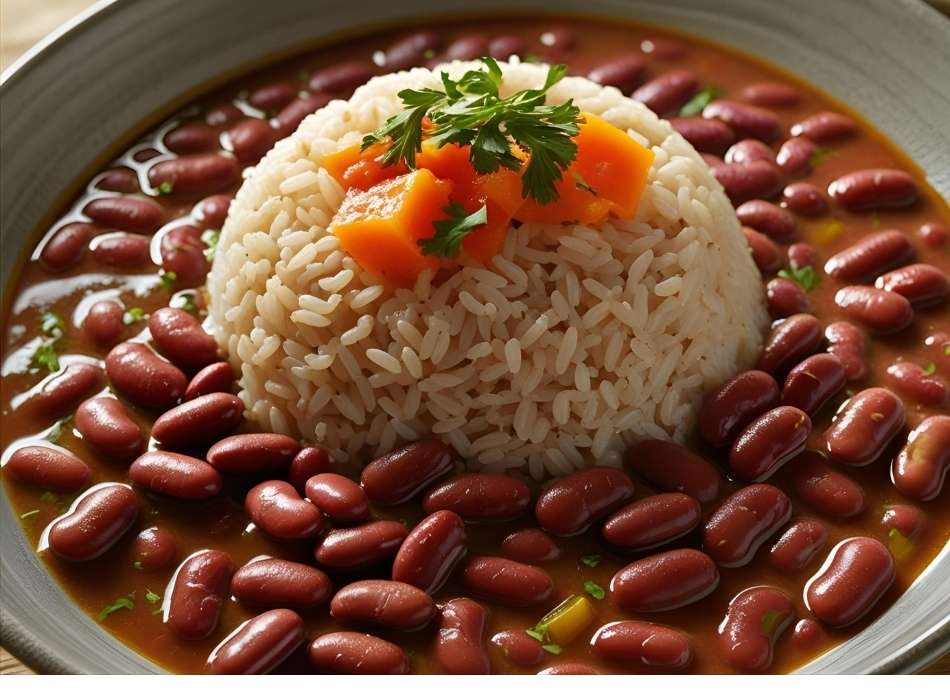Cheddar’s Scratch Kitchen has earned a devoted following for its bold, flavorful dishes that taste like they’ve been simmering all day. Among their most beloved menu items is the hearty red beans and rice—a dish that perfectly captures the essence of Southern comfort food. This iconic recipe combines tender red kidney beans with aromatic vegetables, savoury spices, and smoky sausage to create a meal that’s both satisfying and soul-warming.
What makes Cheddar’s version so special isn’t just the combination of ingredients, but the careful balance of flavours that develops through slow cooking and the right blend of seasonings. The restaurant’s approach creates layers of taste that build from the first bite to the last spoonful.
This comprehensive guide will walk you through recreating Cheddar’s famous Red Beans and Rice recipe in your kitchen. You’ll discover the key ingredients that give this dish its distinctive flavour, learn the proper techniques for achieving that perfect creamy texture, and pick up professional tips that will make your homemade version rival the restaurant original.
Understanding the Foundation of Great Red Beans and Rice
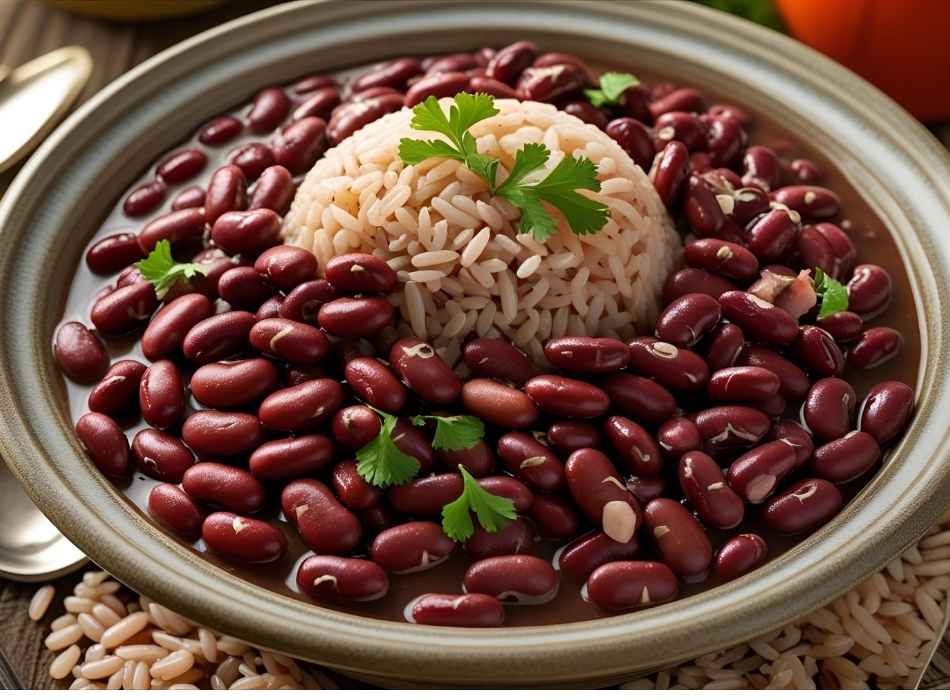
Red beans and rice represent more than just a simple combination of legumes and grain. This dish has deep roots in Louisiana Creole cuisine, where it is traditionally served on Mondays, using leftover ham bones from Sunday dinner to create something entirely new and delicious.
Cheddar’s version honours this tradition while adding its signature touches. The key lies in building flavours gradually, starting with a proper base of aromatic vegetables and allowing the beans to absorb all the seasonings slowly.
Essential Ingredients for Authentic Flavour
The magic of Cheddar’s red beans and rice starts with selecting the right ingredients. Each component plays a crucial role in developing the dish’s complex flavour profile.
Red kidney beans form the foundation of this recipe. While canned beans offer convenience, dried beans soaked overnight will provide you with better texture and flavour control. The beans should be creamy inside while maintaining their shape.
Andouille sausage provides the smoky, spicy backbone that makes this dish memorable. This Louisiana-style sausage brings heat and depth that regular smoked sausage can’t match. If andouille isn’t available, a good-quality smoked sausage can be a suitable substitute.
The holy trinity of Creole cooking—onions, celery, and bell peppers—creates the aromatic base. These vegetables, when sautéed until soft, release their natural sugars and build the foundation for all other flavours.
Step-by-Step Preparation Method
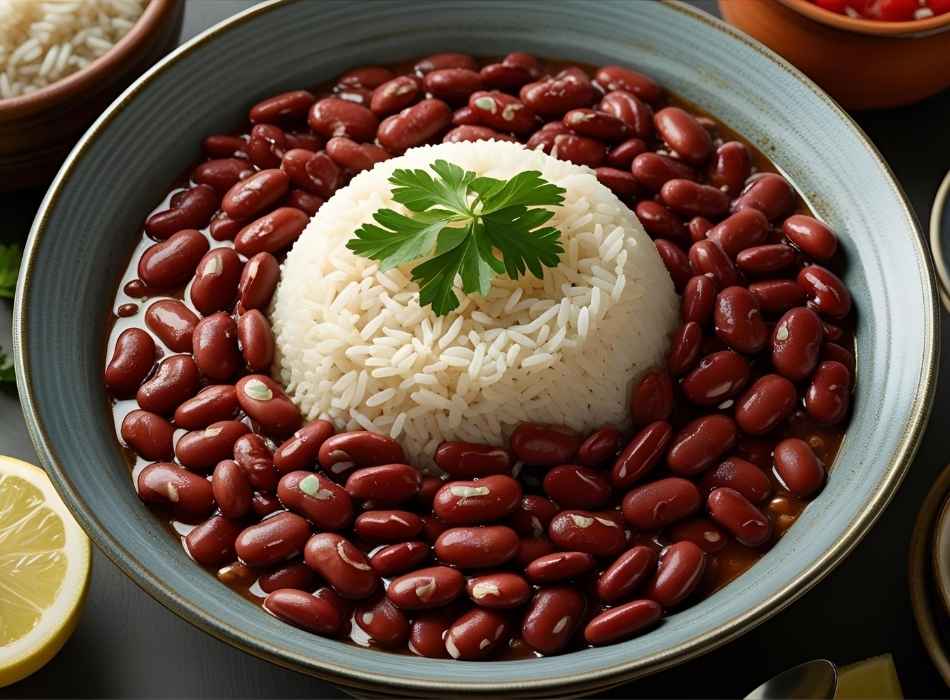
Creating restaurant-quality red beans and rice requires patience and attention to detail. The process involves several stages, each building upon the previous one to create layers of flavour.
Preparing Your Ingredients
Start by soaking dried red kidney beans overnight in cold water. This step ensures even cooking and reduces the overall cooking time. Drain and rinse the beans before cooking.
Dice your vegetables uniformly—this ensures they cook evenly and are distributed throughout the dish. Cut the onions, celery, and bell peppers into small, consistent pieces. Mince the garlic finely so that it blends seamlessly into the base.
Slice the andouille sausage into rounds about ¼-inch thick. This size allows the sausage to cook through while maintaining its texture and distributing flavour throughout the dish.
Building the Flavour Base
Heat a large, heavy-bottomed pot over medium heat. Add a small amount of oil and brown the sliced sausage until it develops a nice caramelised exterior. This browning process creates fond—those flavorful brown bits that stick to the bottom of the pot.
Remove the sausage and set it aside, leaving the rendered fat in the pot. This fat will serve as your cooking medium for the vegetables, adding another layer of flavour to the dish.
Add the diced onions, celery, and bell peppers to the pot. Simmer these vegetables until they’re soft and translucent, about 8-10 minutes. This process, known as “sweating,” draws out moisture and concentrates flavours.
Seasoning and Simmering
Once your vegetables are properly cooked, add the minced garlic and cook for an additional minute, until fragrant. Be careful not to burn the garlic, as it can turn bitter.
Add your seasonings: bay leaves, thyme, oregano, cayenne pepper, and black pepper. Stir these spices into the vegetable mixture and cook for about 30 seconds to release their aromatic oils.
Pour in your liquid, typically a combination of chicken broth and water. The liquid should cover the beans by about two inches. Bring the mixture to a boil, then reduce the heat to maintain a gentle simmer.
Add the soaked and drained beans to the pot along with the browned sausage. The slow simmering process that follows is crucial for developing the dish’s characteristic creamy texture.
Achieving the Perfect Texture

The hallmark of great red beans and rice is achieving the right consistency—creamy and thick, but not mushy. This texture comes from a combination of properly cooked beans and the natural starches they release during cooking.
The Importance of Slow Cooking
Simmer the beans gently for 2-3 hours, stirring occasionally and adding more liquid if needed. The beans should always be covered with liquid to prevent them from drying out or cooking unevenly.
As the beans cook, some will naturally break down and thicken the cooking liquid. This is precisely what you want—it creates the creamy base that makes the dish so satisfying.
Traditional Thickening Techniques
About 30 minutes before serving, you can encourage this thickening process by mashing some of the beans against the side of the pot. This releases more starch, creating a creamier consistency.
Some cooks prefer to remove about a cup of the beans, mash them thoroughly, and stir them back into the pot. This technique ensures even distribution of the thickening agent.
Serving and Presentation Tips
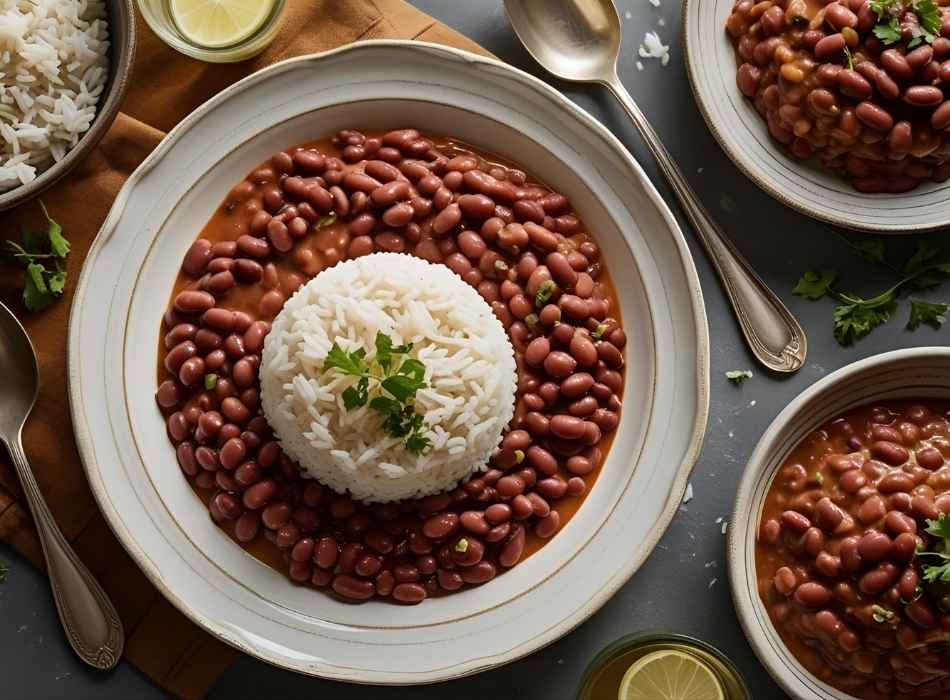
Cheddar’s serves its red beans and rice over fluffy white rice, allowing the creamy bean mixture to soak into the grains. The rice should be cooked separately and serve as a neutral base that doesn’t compete with the bold flavours of the beans.
Rice Preparation
Use long-grain white rice for the best results. Cook it according to the package directions, but consider using chicken broth instead of water for added flavour. The rice should be fluffy and separate, not sticky or mushy.
Garnishing for Authentic Appeal
Traditional garnishes include finely chopped green onions and fresh parsley. These add colour and a fresh flavour contrast to the rich, hearty beans. A dash of hot sauce on the side allows diners to adjust the heat level to their preference.
Troubleshooting Common Issues

Even experienced cooks sometimes encounter challenges when making red beans and rice. Understanding how to address these issues will help you achieve consistent results.
Dealing with Tough Beans
If your beans remain tough after extended cooking, the problem may be due to old beans or hard water. Adding a pinch of baking soda to the cooking liquid can help soften stubborn beans.
Adjusting Consistency
If your beans become too thick, add more hot broth or water to thin them out. If they’re too thin, continue simmering uncovered to reduce the liquid, or mash more beans to release additional starch.
Storing and Reheating
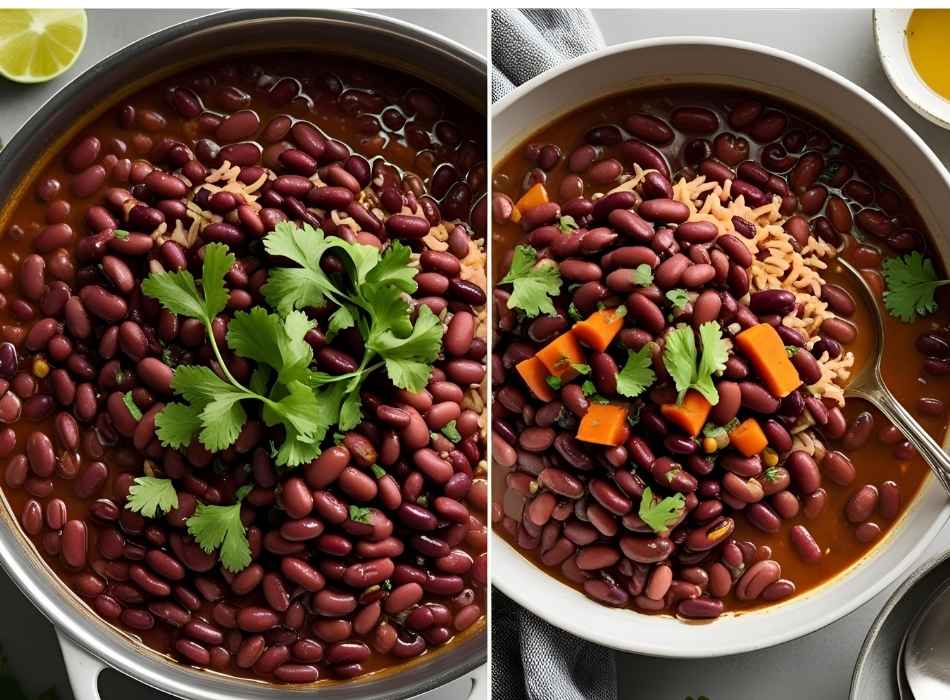
Red beans and rice improve with time, making it perfect for meal prep or leftovers. The flavours continue to meld and develop even after cooking is complete.
Store leftover beans in the refrigerator for up to five days. When reheating, add a splash of broth or water to restore the proper consistency, as the beans will thicken considerably when cold.
Bring Restaurant Quality to Your Kitchen
Recreating Cheddar’s red beans and rice at Home requires patience and attention to detail, but the results are worth the effort. The combination of proper technique, quality ingredients, and slow cooking creates a dish that’s both comforting and sophisticated.
The beauty of this recipe lies in its flexibility—you can adjust the seasonings to suit your taste preferences while maintaining the essential character of the dish. Whether you’re cooking for a family dinner or entertaining guests, this hearty, flavorful meal will satisfy and impress.
Start with this foundation recipe, then make it your own by experimenting with different sausage varieties or adjusting the spice levels to suit your taste. With practice, you’ll develop your version of this Louisiana classic that rivals any restaurant.



















